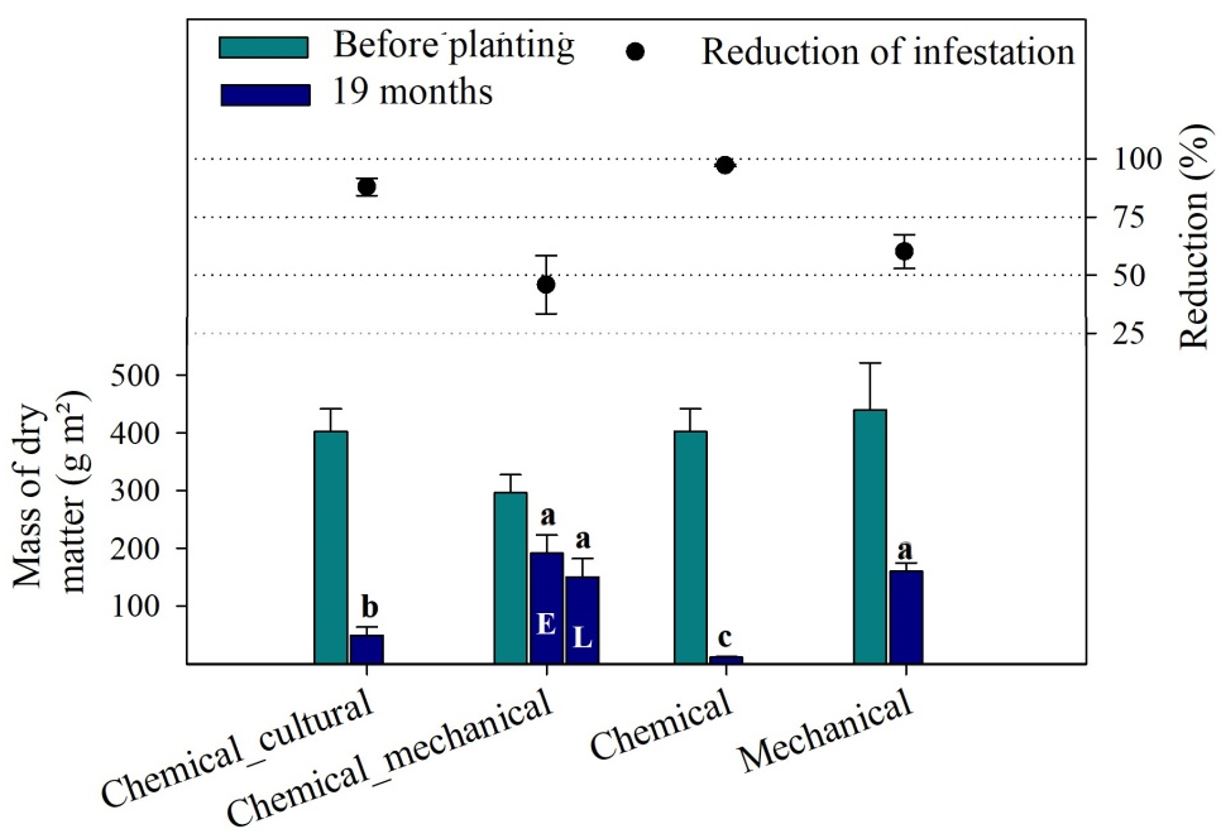Abstract
This study aimed to assess the effectiveness of four weed control strategies in forest setting stands linked by a set of Atlantic Forest tree species. Four treatments were employed: mechanical – manual hoeing and mowing; chemical – glyphosate herbicide application in the total area; chemical – cultural – herbicide spraying and herbaceous legume intercropping; chemical-mechanical – herbicide planting in rows and mowing in the interrows. Diameter, crown area and soil cover percentage of the eight tree species were assessed at 18 months. Herbicide spraying in total area promoted the greatest reduction in weed populations, as well as superior growth in height, diameter, crown area and soil cover of the tree species. More interventions were necessary in the treatment of mechanical weed control that has also shown the least growth of the tree species. The chemical method was the most effective in weed control and promoted the greatest growth of the tree species.
Keywords:
weed control; competition; mechanical control; chemical control and glyphosate

 Thumbnail
Thumbnail
 Thumbnail
Thumbnail
 Thumbnail
Thumbnail
 Thumbnail
Thumbnail



